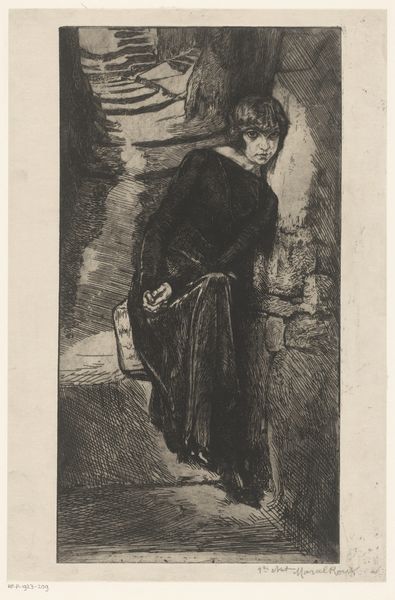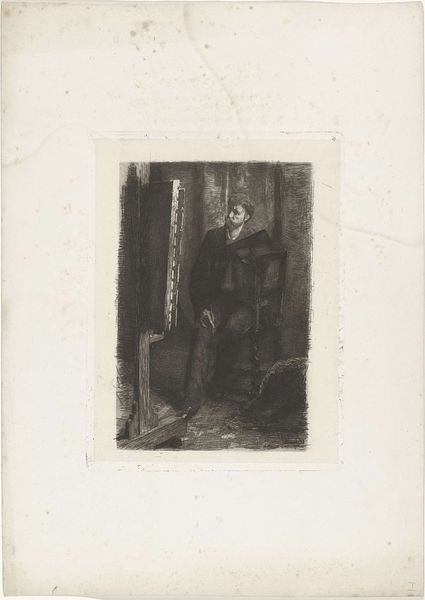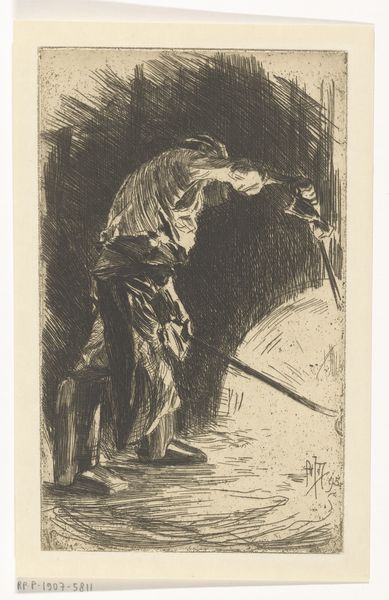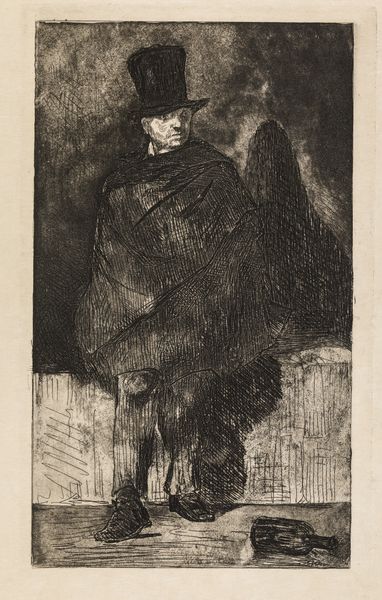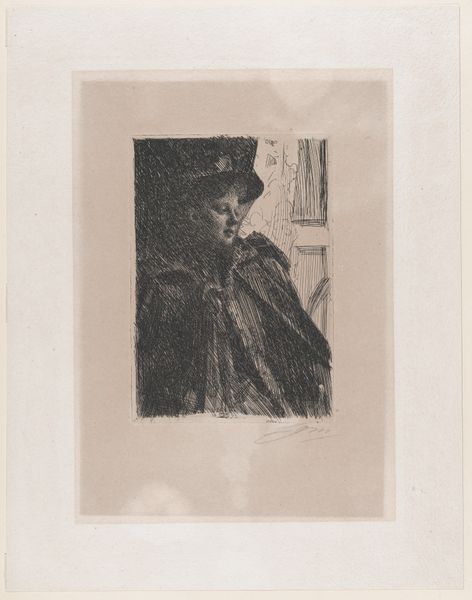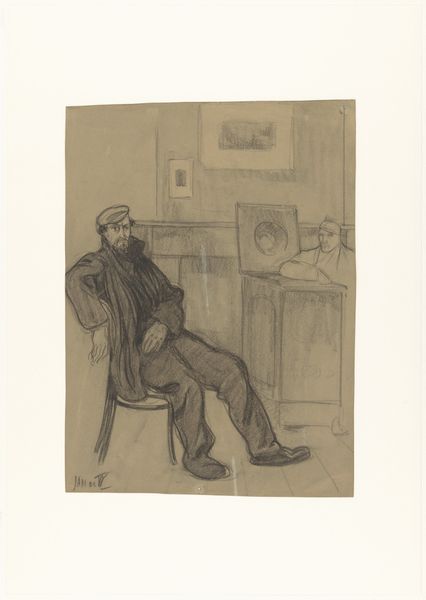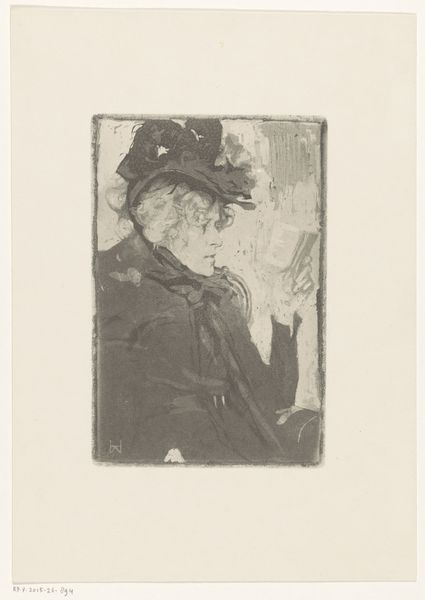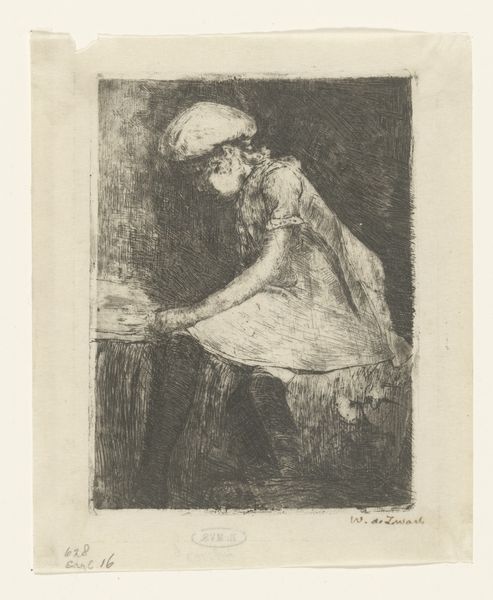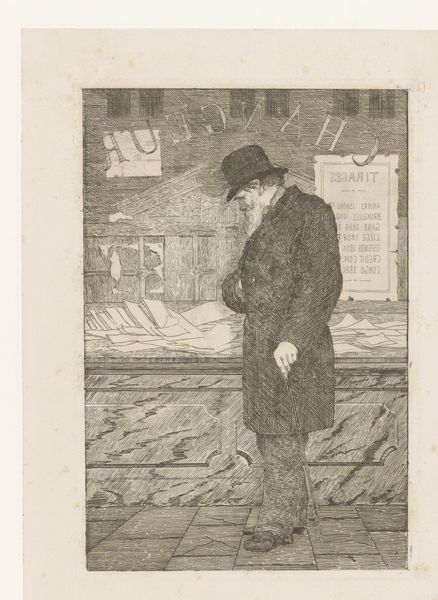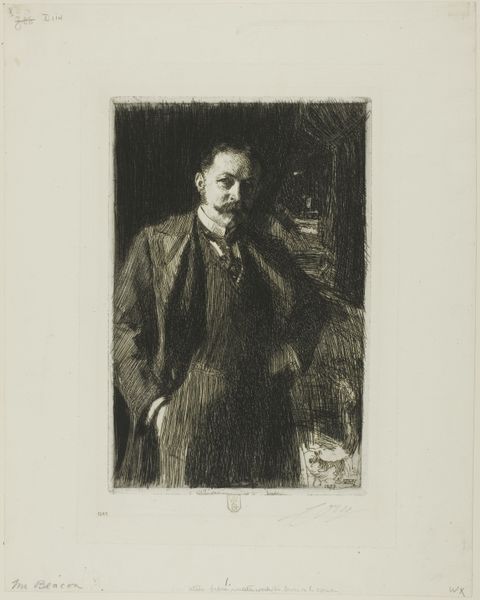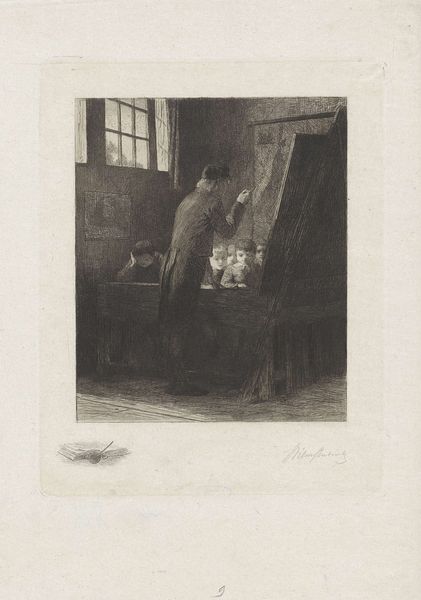
drawing, print, etching
#
portrait
#
drawing
# print
#
etching
#
charcoal drawing
#
pencil drawing
#
realism
Dimensions: height 230 mm, width 175 mm
Copyright: Rijks Museum: Open Domain
Ferdinand Oldewelt made this portrait using etching, a printmaking technique dating back to the 16th century. To make this image, Oldewelt first applied a waxy ground to a metal plate, then drew his composition with a needle, exposing the metal. The plate was then immersed in acid, which bit into the exposed lines. The longer the plate remained in the acid, the deeper the lines would be. The plate was then inked, and the surface wiped clean, leaving ink only in the etched lines. Finally, the plate and paper were run through a press under high pressure, transferring the image to the paper. Look closely, and you can see the network of fine lines, which together create tone, shadow, and texture. The artist used the precision of the etching needle to capture not just the likeness of the artist, but also the atmosphere of the studio, the weight of the materials, and the labor involved in creating art. Oldewelt's choice of etching elevates the status of the print as a medium, blurring the lines between craft and fine art.
Comments
No comments
Be the first to comment and join the conversation on the ultimate creative platform.
